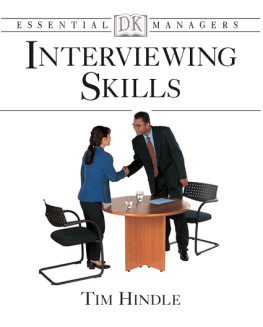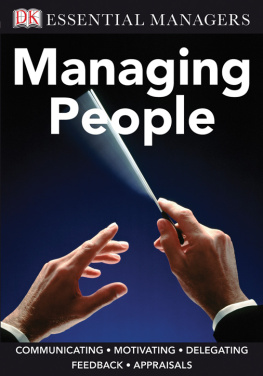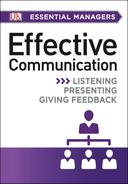Dorling Kindersley Limited
The Penguin Group
Published by the Dorling Kindersley Limited,
80 Strand, London WC2R 0RL
LONDON, NEW YORK,
MUNICH, MELBOURNE, DELHI
Dorling Kindersley Limited, Registered Offices: 80 Strand,
London WC2R 0RL, England
www.dk.com
First Published in paperback in 2001 by Dorling Kindersley Limited. ISBN: 9780789480088
Copyright 2001 Dorling Kindersley
Text Copyright 2001 Moi Ali
This Digital Edition published 2009. ISBN: 9780756662622
Digital conversion by DK Digital Content Services, London and DK Digital Media, Delhi.
No part of this publication may be reproduced, stored in a retrieval system,
or transmitted in any form or by any means, electronic, mechanical, photocopying, recording, or otherwise, without the prior written permission of the copyright owner.
Introduction
Public relations comprises a set of practical skills and strategies designed to enhance the reputation of an organization, strengthen its relationships with key audiences, and enable it to deal with crises from a position of strength. Whether PR is the main focus of your work, or merely an addition to your job description, Effective Public Relations will guide you to success. Covering the principal aspects of PR, including the vital skills of using the media, organizing events, and producing persuasive publicity material, this guide shows you how to ensure the wellbeing of your organization. Use the self-assessment questionnaire to measure your skill level and identify areas for improvement; and follow the hints, guidance, and advice to help you build and develop your PR skills. Backed up with 101 tips, this guide is an invaluable pocket guide to an essential business discipline.
Understanding Public Relations
An organizations reputation is one of its most critical assets. Understand how public relations builds and enhances a good image and why a strategic approach ensures success.
Defining Public Relations
Public relations, or PR, is a powerful tool that can make a vital contribution to organizational success. Learn to distinguish between effective PR and cheap publicity gimmicks in order to build a solid, respected reputation with your key audiences.

Be aware that an organizations actions can have wide implications.

Make certain that all PR claims can be substantiated.
Understanding the basics
Public relations describes the way issues and messages are communicated between an organization and the public. It is the discipline that looks after corporate reputation. The aim of PR is to win understanding and support from, and to influence the opinions and behavior of, an organizations key audiences. This is achieved through a planned, sustained set of activities.

Remind colleagues that they all have a PR role, regardless of their job title.
Building reputation
The true purpose of PR is to create a well-deserved reputation. That may involve offering excellent customer care, communicating effectively with your audiences, and showing social responsibility toward your workforce, the local community, and the environment. Cheap publicity gimmicks designed to deceive the public, or glitzy activities aimed at diverting attention from poor organizational behavior, give PR a bad name and have no place in an effective PR campaign.
Anticipating events
Effective PR is about anticipating tomorrows issues, rather than apologizing to staff and the public for poor decisions that have been made. By harnessing PR skills you will not only be able to act to improve the reputation of your organization, but you will also be able to show your colleagues what PR can do to make their jobs easier. Demonstrate how PR can help the human resources department improve employee communications. Prove the worth of PR in supporting marketing activity. Ensure that the chief executive knows that good PR can build better investor relationships and thereby help the stock price.
Achieving a good outcome
The outcome of effective PR is a good, well-deserved image based on a genuine commitment to provide excellent service and to be a good, caring employer and a responsible organization. Cheap publicity creates an image without substance.
Positive outcome
- I like that organization
- The staff are genuine and I trust them
- It deserves its good reputation
Poor outcome
- That company always hypes its achievements
- This is just another cheap PR stunt
- It uses glossy publicity to hide its shortcomings

Know that averting bad publicity is as crucial as attracting good publicity.
Using PR with Marketing
The differences between PR and marketing may seem blurred, yet each has its own part to play in organizational success. Use PR to support marketing activity and coordinate these two distinct disciplines for maximum impact.

Use both editorial and advertising to secure positive media coverage.
Fitting PR into the marketing mix
Marketing involves developing the right product at the right price, getting it to a place where consumers can buy it, and promoting it so that they know about it. These components are known as the marketing mix, or the four Ps: product, price, place, and promotion. PR is often seen as the fifth P of the mix, standing for perception. Consumers prefer to do business with organizations they hold in high regard, and effective PR builds positive perceptions, creating a fertile environment for successful marketing.

Working with the marketing teamAttend marketing meetings, explain to marketing colleagues how PR can support their campaigns, and point out any negative PR implications that may result from their planned activity.

Plan a day away with colleagues to improve team dynamics.
| Marketing objective | Supportive PR activity |
| To build stronger and more lasting relationships with clients. | - Organize a corporate hospitality event.
- Produce a quarterly customer newsletter.
|
| To increase the publics awareness of the organization. | - Secure positive media coverage.
- Organize an open day.
|
| To promote a new line of products more widely. |



















 Be aware that an organizations actions can have wide implications.
Be aware that an organizations actions can have wide implications.